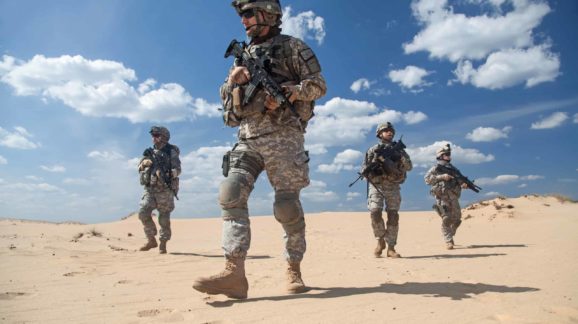Back to Square One in the War on Terror
In time, the harrowing images from Afghanistan will disappear from television screens. Americans will debate the incompetence of the final withdrawal, which maximized the defeat, the betrayal of friends and allies, and the blow to America’s credibility and prestige. And then America will move on, as Afghanistan slides once again into the awful tyranny of illiterate religious fanatics.
And then, the more discerning will notice that Afghanistan suddenly looks almost exactly as it looked just before September 11, 2001: a massive safe haven for terrorists of global reach, nested within one of the world’s most prolific state sponsors of terrorism.
More than a decade ago, Joseph Biden was a proponent of the “over the horizon” strategy for dealing with Afghanistan. He advocated a reduced footprint in Afghanistan focused on roving airborne search-and-destroy missions, while leaving the Afghans to sort out their political situation largely for themselves.
As a staffer in the Senate, I sympathized with the concept but had grave doubts that it could work. For one thing, it was at odds with the strategy adopted after 9/11 to disrupt and ultimately defeat Islamist terrorist organizations of global reach.
Since we seem to have forgotten, let’s recall what that strategy was. To disrupt the terrorists, we would deprive them of the ability to operate, cutting off their sources of financing, infiltrating their communications, and attacking them everywhere they could be found. We would keep them on their heels, fighting just to survive, and therefore unable to plan and execute mass-casualty terrorist attacks.
But to defeat them in the long run, the Bush administration realized that we needed to defeat their messianic ideology, the thing that gives the terrorists the willingness to fight and blow themselves up. As long as large numbers of Muslims continue to believe in that depraved and barbaric version of Islam, there would always be fresh recruits to take the place of those we killed and captured. In order to defeat their ideology, we had to convince people in terrorism’s recruiting grounds that they had no chance of winning, that try as they might, they could only suffer one defeat after another. We had to break their will to fight, just as we had done to the Soviet Union.
The Bush administration also realized that Islamist terror networks were present in 60 or more countries with whom we were not at war. The first and most important line of defense against those terrorists would be the law enforcement and military capabilities of those countries. Hence, “partnership capacity building” quickly became a large part of what the Departments of State and Defense did on a daily basis. That entailed a commitment to friends, partners, and allies.
Long story short, the “over-the-horizon” strategy contradicted every element of the post-9/11 strategy. Those doubts were borne out when Obama defaulted to his own “over-the-horizon” strategy when he abandoned Iraq to its own devices in 2011.
Most of us didn’t realize at the time that when Obama pulled U.S. forces out of Iraq, he also pulled out all our “ISR”: Intelligence Surveillance and Reconnaissance. So when ISIS began its dramatic advance across the Middle East, all we had going was satellite intelligence — not much help against fighters who dress like everyone else and roll around in Toyotas.
In a region of the world teeming with U.S. military and intelligence assets, Iraq had become a black hole: No AC-130s, no helicopters, no drones, no special forces, no regular soldiers within hundreds of miles. That’s what the “over-the-horizon” strategy looked like in Iraq. Those assets all need local operating bases, and we had none. Satellites and supersonic aircraft were of no help against ISIS.
So after some pointless airstrikes, we had to put U.S. forces back into Iraq. And because we had no ISR to start with, U.S. forces had to start their intelligence-gathering from scratch.
Read the full article at National Review.
